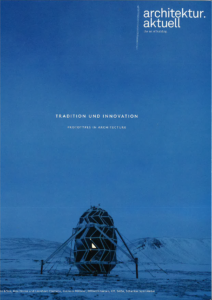Which kind of More?
Public lecture by Prof. Dirk E. Hebel at the Design Research Society Biennial International Conference in Bangkok on July 04, 2012.
As urban populations grow so does the demand for materials and resources to support them. Where such resource demands were once satisfied by local and regional hinterlands, they are increasingly global in scale and reach. This phenomenon has generated materials flows that are trans-continental and planetary in scope, and has profound consequences for the sustainability, functioning, sense of ownership and identity of future cities. Seen from this perspective, the project for urban sustainability must be global in ambition, but cannot be a matter of applying a universal set of rules. Rather, sustainability requires a decentralised approach that both acknowledges the global dimension and is sensitive to the social, cultural, aesthetic, economic, and ecological capacities of particular places to thrive and endure.
Urban sustainability is therefore the capacity of densely populated conglomerates for a social, economic and ecological endurance. In this sense, the urban has to be understood as an open dynamic system with changing parameters characterizing long-lasting measures to achieve a sustainable behavior. In past decades, a phenomena of global “best construction practice” traveled through universities and building industries worldwide. Handbooks of sustainable construction, no matter in which location or context they were produced, were applied in a global scale, leading to a misunderstanding that sustainability could be measured as a universal standard. Sustainable construction methods must acknowledge their specific context und cultural setting, including the skills of local workers. Availability and origin of materials as well as their connection and economic as well as ecological value need to be taken into consideration, before deciding on certain construction methods. The context of a certain construction application includes the cultural space (history, religion, language, etc), the ecological space (which materials and products are produced locally with how much energy and other input sources), the ethical space (who produced the materials and products where and at which costs), as well as the economical space (which materials and products generated a local value chain and which are imported).






























